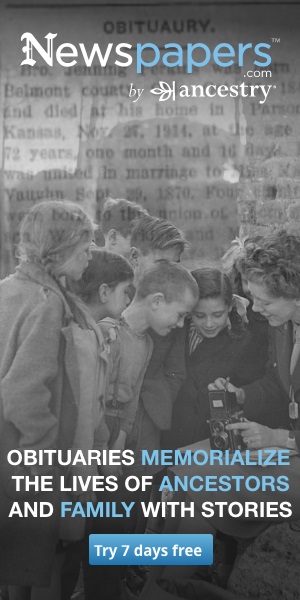U.S., Social Security Death Index, 1935-2014
Jacksonville Almost Wound Up Somewhere Else!
This article is compiled by Julian Williams.
After the creation of Telfair County on December 10, 1807, James Alston, William Carol, William Lott, Jr., Jesse Byrd, and Thomas Raines were appointed Justices of the Inferior Court.
After being elected, Duncan Curry was Clerk of Superior and Inferior Courts, Cullen Edwards became Sheriff, and Benjamin Mitchell Griffin, Coroner.
The first State Representative was Thomas Watts and the first State Senator was William Lott.
Because of the Indians, militia districts were established immediately and a county seat located at Jacksonville.
Jacksonville almost wound up on Horse Creek, about eight miles east of where it is now!
At that time, the Horse Creek location was more in the center of the county but when Montgomery received part of Telfair that location was not central ; so, the site was moved to the Big Bend area, its present location.
In 1814, land was obtained from John Parramore and a year later, on December 14, 1815, the town of Jacksonville, Georgia, received its charter.
The act to incorporate the town reads, in part,
"Be it enacted by the Senate and House of Representatives of the state of Georgia, in General Assembly met, and by the authority of the same, That Charles McKinyan (McKinnon), Abel L. Hatton, William Harris, Nathaniel Ashley and Noah Palmour (Parramore) be commissioners of said town;";
"And be it further enacted, That the powers confided to this incorporation shall not exceed the limits of the lands belonging to the public, and that the name of Jacksonville is here intended to perpetuate the name and memory of the late hero of New Orleans."
(Note: "late" here means "recent" as General Andrew Jackson had just won his victory over the British.)
Another colorful character in the forming of Jacksonville was Gibson Clark, son of Revolutionary War hero General Elijah Clark(e).
It seems the general used the "e" at times in his last name but his children spelled it without the "e."
These people were fighting folks (despite having many Quakers in the family, especially on the maternal side).
General Elijah Clark(e), (for whom Clarke County is named), decided he would start his own country - the Trans-Oconee Republic - to be located on the west side of the Oconee.
Of course, at the time this was a no-no because the Creek Indians held claim to that land.
Someone told the old fighting general that General Washington would really like to see him give up this passion and return to the United States of America.
He did this reluctantly, but his boys, John and Gibson, inherited some of their daddy's fire. Gibson, the younger, graduated as the first valedictorian of the University of Georgia in 1804, and came to Jacksonville to fight Indians and anyone else who would engage him.
He was Telfair's State Senator in 1814.
Addie Garrison Briggs, in "History of Telfair County 1807-1987", says the grand jury presented him to the court for firing a pistol at B.M. Griffin at the courthouse, where one presumes that such doings were rare, and in another instance, shooting at James Rogers, at Parramore's Public House, where such carryings-on were probably commonplace.
By the early 1820's Gibson had left the county.
It is said that son John Clark was "a transitory resident" and had a plantation just above where Blockhouse Church sits.
The church site was also the site of Fort Clark, which was named for John Clark. John Clark, at the age of 14, served with his father, General Elijah Clark(e), in the Revolutionary War and achieved the rank of Captain by age 16.
He later rose to the rank of Major General.
He was living at his Jacksonville place when he left to serve two terms as Governor of Georgia (1819-1823).
He never returned.
He was also a bitter political enemy of Governor Troup, first cousin of Creek Indian Chief William McIntosh.
Clark's fiery temperament led to a duel with William H. Crawford, who was slightly wounded. Clark and his wife, on a vacation to Cuba, contracted yellow fever and died in 1832.
They are buried at St. Andrew's Bay, Florida, on the Gulf of Mexico (Floris Perkins Mann in History of Telfair County).


